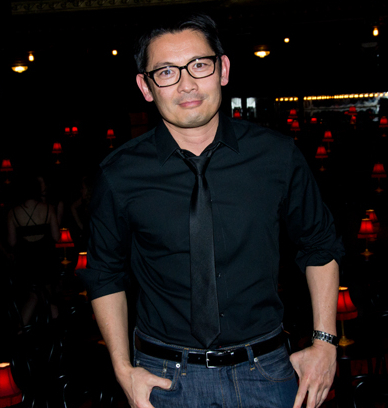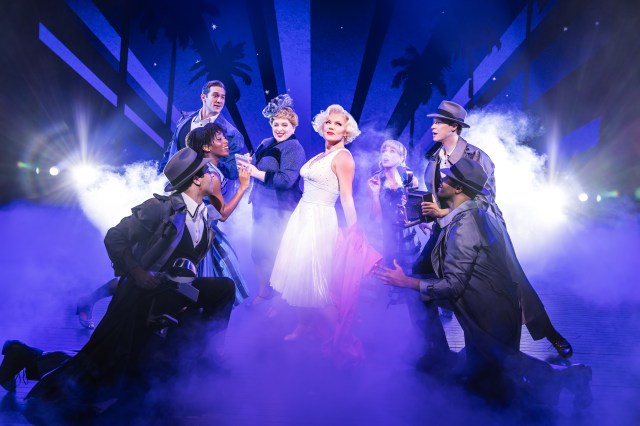Creating Cabaret's Kit Kat Klub
Scenic Designer Robert Brill explains what it took to rebuild Studio 54 — from the ground up.

(© David Gordon)
"In here," says the Emcee at the beginning of John Kander, Fred Ebb, and Joe Masteroff's Cabaret, "life is beautiful." That mantra was the starting point for Robert Brill, the scenic and club designer behind Roundabout Theatre Company's legendary 1998 revival of the production, which he has currently re-created at Studio 54 for the show's highly anticipated return. When it premiered in 1966, this concept musical featured a giant mirror that allowed the audience to see themselves. Under Sam Mendes and Rob Marshall (who codirected both the 1998 and 2014 productions), the show was made even more conceptual when they and Brill chose to blur the lines of performance and spectator even further, setting the entire play within the Kit Kat Klub.
"I think the most important thing is that the audience feels like they're entering the world of this nightclub," Brill says amid previews of the show's remounting. "From the moment they pass through the doors of the theater, they're slowly transported into this world. What's been the key is to make that journey feel gradual, that they are slowly charmed into the world and taken on this journey. It's a great exercise to try and resist the temptation to do too much."
In fact, it's a simple set of accoutrements that takes the audience between the various worlds that the authors depict. Rather than sit in standard auditorium chairs, guests sit in chairs at café tables with period-themed lamps on them. It's those red table lamps that take us "between the world of the club and the book scenes," by turning on whenever Sally Bowles or the Emcee takes the stage, Brill notes.
Studio 54 wasn't the original home of Mendes and Marshall's Cabaret. When the production first transferred to Broadway after running years earlier at London's Donmar Warehouse, it played for nine months at Henry Miller's Theatre (now the Stephen Sondheim). The search for a larger space, along with a crane crash at a neighboring construction site, prompted the move. They ended their run there on November 8, 1998, and reopened four days later on 54th Street. "We were running on 43rd Street while we were working on the renovation of Studio 54," Brill noted. They had a total of 10 weeks to get the venue ready. And that meant excavating the space.
"The idea behind Studio 54 [as a disco]," Brill says, "was that everybody was onstage. It was one level, coming from the back of the house onto the stage. Everything [in the space now, including the custom-flooring] is built up from zero." The process began with the standard demolition work. "Everything from the original Studio 54 was still in here," Brill adds. "It was all covered with black drywall." They willingly chose not to restore the original proscenium arch, because it "wouldn't be honest." So they embraced it instead; broken parts and paint chips included.
For this iteration of Cabaret, Brill and his team had more time to ready the space. "Normal load-in would be maybe three weeks," he says, "but because Roundabout operates the theater, we've been able to do it slowly over the last few months." He credits the theater's crew with an unparalleled dedication to the show. "A number of the crew members were on the original, so they've been instrumental in doing a lot of paint renovation and redoing the space. It was all rebuilt again from scratch."
Get an inside look at the Kit Kat Klub in the gallery below.








